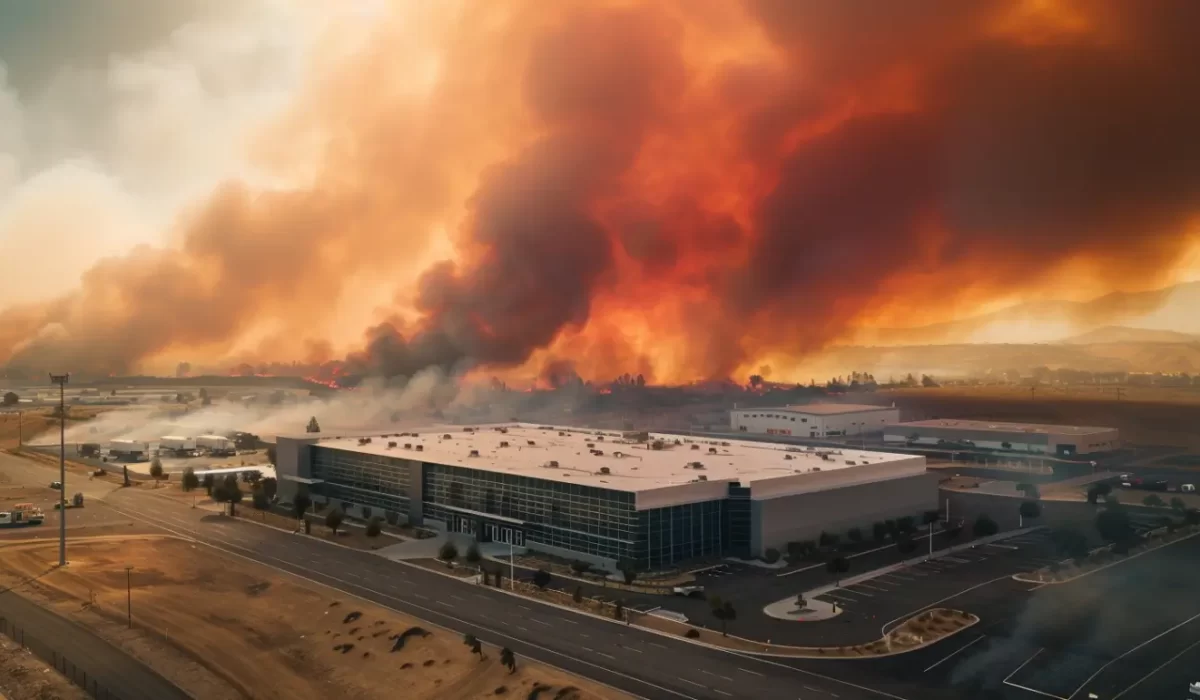Securing your property with fire-resistant roofing is no longer optional in California’s fire-prone environment—it is essential for home safety and compliance with the California building code. At Fontaine Roofing, we understand the critical need for roofing solutions that combine exceptional fire resistance with durability and curb appeal. Our expertise helps HOAs and property managers safeguard communities, reduce risks, and meet stringent regulatory requirements. Fire-resistant roofs are not just a precaution—they are an investment in the long-term well-being of your property.
The Importance of Fire-Resistant Roofing in California Developments
California’s wildfire risks have made fire resistance a top priority for new developments and existing structures. A fire-resistant roof shields your property from airborne embers and radiant heat, providing the best protection for California homes and commercial buildings.
Choosing the right roofing materials not only enhances fire protection but also brings peace of mind to property managers and communities. Fire-resistant solutions can reduce insurance premiums and fortify structural support, ensuring the longevity and safety of your investment.
Contact Us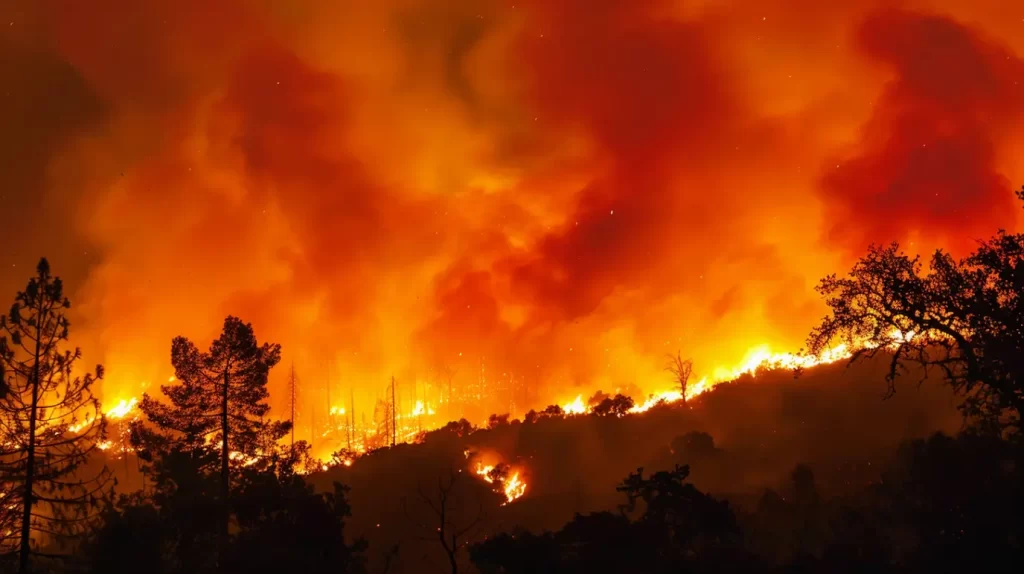
Wildfire Risks and Insurance Implications in California
California’s dry climate elevates wildfire risks, making home safety crucial for property managers and HOAs. These threats can escalate quickly, leading to significant property loss and increased insurance premiums.
Adopting fire-resistant roofing is an effective solution. When combined with defensible space and fire-retardant landscaping, properties are better protected against wildfires. This strategy aligns with California building codes, enhancing community safety.
Regulations mandate approved fire-resistant materials for new developments, guiding material selection and installation. Investing in fire-resistant roofing can reduce insurance costs, ensure compliance, and provide peace of mind.
How Fire-Resistant Roofing Protects Communities and Investments
Fire-resistant roofing is essential for California homes, particularly in wildfire-prone areas. Using materials like metal roofs or concrete tiles enhances safety and property values while ensuring compliance with strict building codes. These roofs also lower insurance premiums, as properties with better fire protection face reduced risk. Beyond financial benefits, fire-resistant roofs provide peace of mind for homeowners, improving community resilience during extreme conditions. Investing in these solutions is crucial for long-term safety.
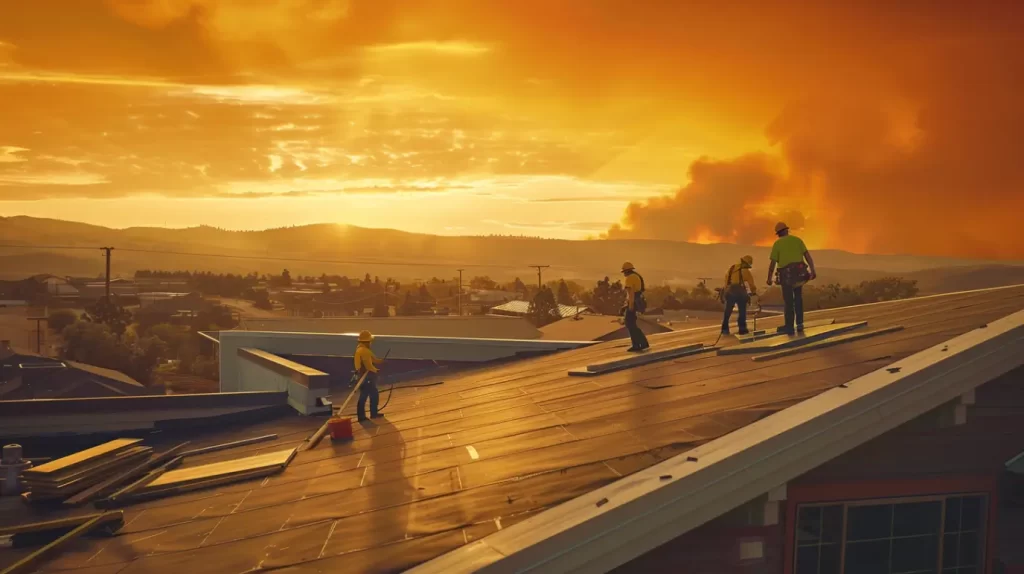
Understanding Fire Safety Ratings for Roofing Materials
Fire rating systems are crucial for selecting roofing materials in California. Each product is tested for fire resistance, impacting its classification as a rated roof covering. These ratings affect flame spread, ignition risk, and overall fire safety.
Understanding these ratings enables property managers and HOAs to choose compliant roofing assemblies that ensure effective fire protection. Let’s delve into the meaning of Class A fire ratings and the testing procedures for roofing materials.
What Does a Class A Fire Rating Mean?
A Class A fire rating is the highest standard for roofing materials, designed to resist severe flames and prevent fire spread, ensuring optimal wildfire protection for California homes and businesses.
Class A roofs undergo rigorous testing to resist ignition and prevent flames from reaching the roof deck, even under extreme heat.
For property managers and HOAs, choosing Class A materials is crucial. They comply with California building codes, reduce liability, and enhance safety. Fontaine Roofing recommends Class A roofs for new developments and replacements in high-risk areas.
Fire Testing Procedures for Roofing Products
To ensure roofing materials meet fire safety standards, rigorous testing assesses flame spread and heat release. The Office of the State Fire Marshal (OSFM) oversees evaluations that simulate California’s dry climate and high temperatures. Tests like the Natural Weathering Exposure Test reveal how products withstand environmental stressors, providing insights into wildfire performance.
Proper installation of rated roof coverings, such as metal roofs or concrete tiles, enhances safety. Following guidelines helps contractors maintain fire resistance while improving aesthetics. Regular maintenance also safeguards these investments from vulnerabilities.
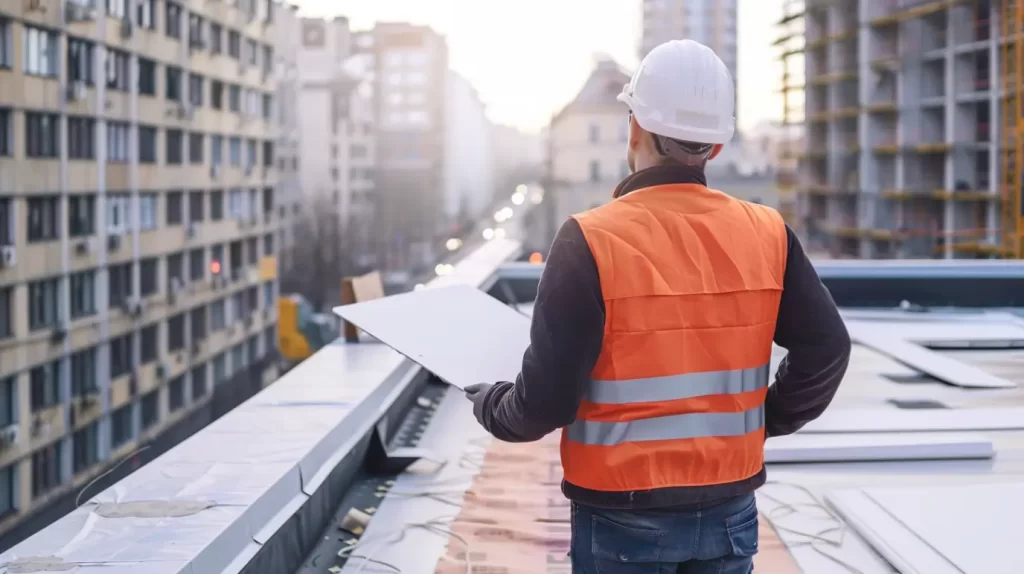
California Building Codes & Regulations
California building code enforces strict standards for fire resistance in roofing assemblies, especially in wildfire-prone regions. The Office of the State Fire Marshal plays a central role by approving rated roof coverings and maintaining the OSFM Building Materials Listing Program, which catalogs products that meet or exceed state requirements.
Understanding these regulations is vital for HOAs and property managers. Compliance ensures eligibility for insurance, reduces risk, and guarantees that roofing projects deliver reliable fire protection in alignment with local and state standards.
Key California Fire Code Requirements for New Construction
The California Fire Code provides essential regulations for new construction in wildfire-prone areas. These codes require Class A fire-rated roofing materials for superior fire resistance. Structures must also be reviewed for compliance with the California Building Code, which includes defensible space and ignition-resistant techniques.
Roofing installation must follow the state fire marshal’s guidelines to minimize vulnerabilities. Compliance not only ensures fire safety but also boosts the aesthetic appeal and energy efficiency of California homes, giving homeowners peace of mind amid extreme conditions.
Local Ordinances and HOA Compliance Considerations
Local ordinances and HOA requirements often enhance state fire resistance codes. Many California communities enforce stricter standards, requiring defensible space and limiting roofing materials.
HOA boards and property managers must understand local roofing regulations to ensure compliance with legal and community standards, including buffer zones, fire-resistant landscaping, and regular roof inspections.
Working with a certified roofing contractor guarantees compliance and maximizes safety. This approach streamlines approvals, prevents costly delays, and strengthens neighborhood fire protection.
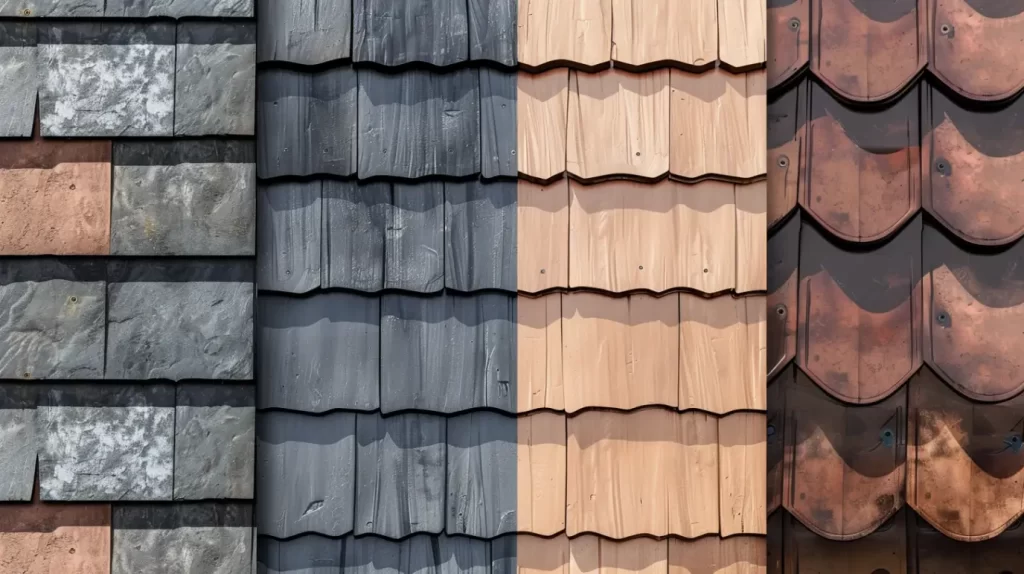
Top Fire-Resistant Roofing Materials for California Developments
Selecting the best roofing materials for fire resistance is a top priority for California developments. Metal, clay, and concrete roofs consistently offer the best protection, combining high fire ratings and durability with strong curb appeal. These solutions are built to withstand extreme heat, radiant energy, and wind-blown embers, safeguarding home safety and property investments.
Fontaine Roofing partners with industry leaders to deliver roofing products that set the standard for fire protection, ensuring your community enjoys maximum security and peace of mind.
Metal Roofing: Features, Benefits, and Installation
Metal roofing provides key benefits, particularly in wildfire-prone areas. Its fire resistance effectively withstands high temperatures and prevents fire spread. Made from non-combustible materials, it enhances safety while offering a range of colors and designs for California homes.
Professional installation is essential to comply with California building codes. Regular maintenance ensures ongoing fire protection and energy efficiency, prolonging the roof’s lifespan. Many quality products come with limited lifetime warranties, giving homeowners confidence in their investment against California’s harsh climate.
Tile, Clay, and Concrete Roofs: Performance in Wildfires
Tile, clay, and concrete roofs are strong fire-resistant options, particularly in California’s wildland urban interface. These materials excel in extreme heat resistance and limit fire spread, unlike combustible alternatives. Their design prevents flames from reaching underlying roofing structures, and adherence to the California Building Code further enhances safety.
Additionally, tile and concrete roofs offer aesthetic appeal while promoting energy efficiency and complementing California’s natural beauty. Regular maintenance is crucial for maintaining their effectiveness and longevity, providing homeowners with peace of mind in fire-prone areas.
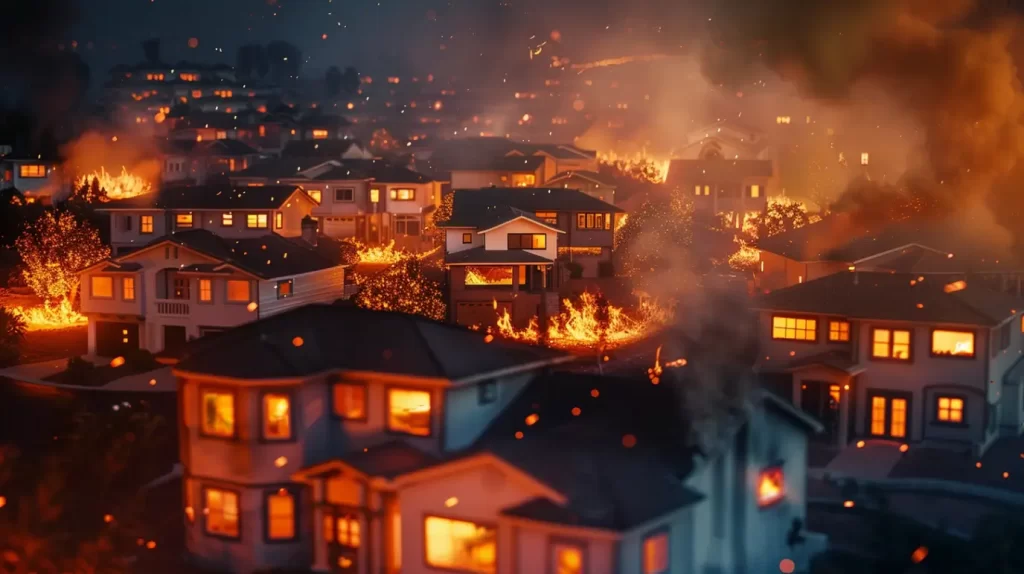
Best Practices for Maintaining Fire-Resistant Roofs
Proper maintenance is essential to preserve fire protection and extend the life of your fire-resistant roof. Routine inspections and upkeep by a professional roofing contractor help identify and repair potential vulnerabilities, ensuring the roof retains its fire resistance over time.
Consistent, regular maintenance is the cornerstone for protecting high-risk California areas. By partnering with experts like Fontaine Roofing, HOAs and property managers can address issues before they escalate, keeping buildings compliant and enhancing peace of mind for residents.
Maintenance Routines for Long-Term Fire Protection
Regular maintenance of fire-resistant roofing is vital for long-term effectiveness, especially in California’s unpredictable climate. A structured upkeep routine enhances both aesthetics and fire protection. Professional contractors recommend annual inspections, particularly after severe weather, to assess the integrity of structural supports and rated roof coverings.
Additionally, routine tasks like clearing debris and checking metal angle flashing can reduce wildfire risks. By maintaining defensible spaces and caring for fire-rated materials, homeowners can gain peace of mind and potentially lower insurance premiums.

Fontaine Roofing’s Expertise in Fire-Resistant Solutions
With 25 years of experience, Fontaine Roofing is a trusted contractor for fire-resistant solutions in Orange County, CA. We collaborate with top manufacturers like GAF, Certainteed, and Polyglass to provide tailored roofing assemblies for HOAs and property managers.
By strictly following manufacturer installation guidelines, we ensure each project meets or exceeds California’s fire safety standards. Our comprehensive services—ranging from initial evaluations to final inspections—reflect our commitment to quality and the long-term protection of your investment.
Our Credentials, Awards, and Manufacturer Partnerships
Fontaine Roofing is renowned for its strong credentials, industry accolades, and valuable manufacturer partnerships. As a GAF Master Elite Contractor, CertainTeed Shingle Master, Polyglass Preferred Contractor, and FiberTite Approved Applicator, we guarantee expertise in every roofing project.
Our memberships in CACM, CAI, and NRCA reflect our commitment to professionalism. We offer roofing assemblies with limited lifetime warranties for lasting value and peace of mind for property managers and HOAs.
Collaborating with leading manufacturers allows us to deliver the latest fire-resistant roofing innovations and installation techniques, ensuring exceptional protection and customer satisfaction.
What’s Next
Investing in fire-resistant roofing is essential for California developments due to rising wildfire risks and strict building codes. Choosing the right materials enhances safety and protects property investments. At Fontaine Roofing, we offer expert fire-resistant solutions that meet or exceed local regulations. Our awards and partnerships with trusted manufacturers highlight our commitment to quality. Ensure your community’s safety and compliance—contact us today for a free consultation on tailored fire-resistant options.
Read our blog: Understanding Roof Warranties: What Property Managers Should Know
Frequently Asked Questions
How often should a fire-resistant roof be inspected for optimal protection?
For optimal fire protection, a fire-resistant roof should be inspected by a professional roofing contractor at least twice a year. Routine inspections and regular maintenance—especially before and after fire season—ensure compliance with California building code and address potential vulnerabilities early.
What is the most fire proof roof?
Slate roofing and metal roofing are widely regarded as the most fire proof, both achieving Class A fire rating. These materials withstand extreme heat and flame spread, providing unmatched protection for California homes and commercial properties exposed to wildfire risks.

